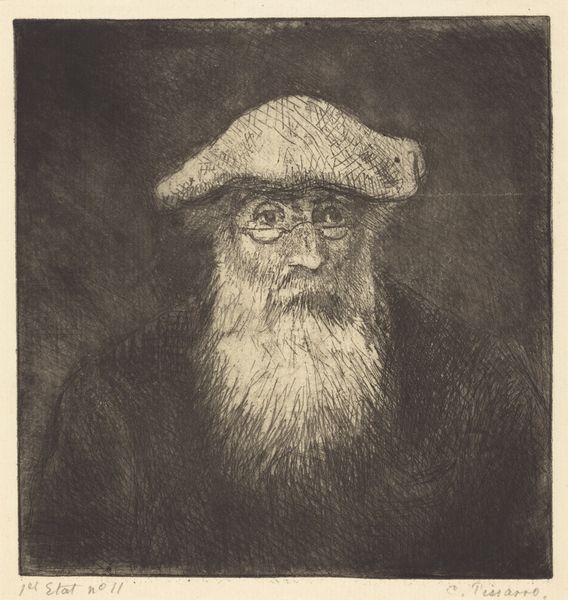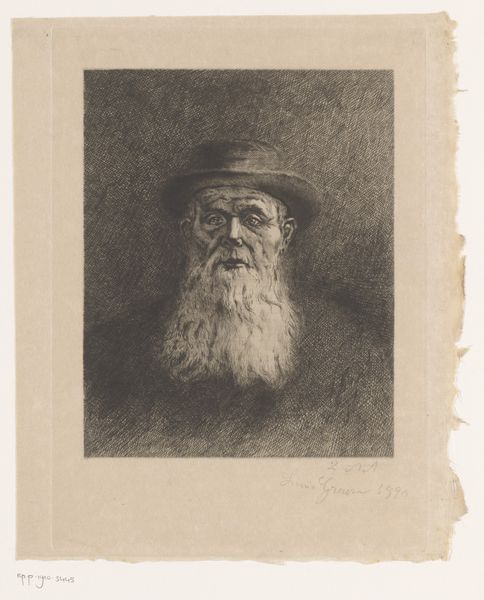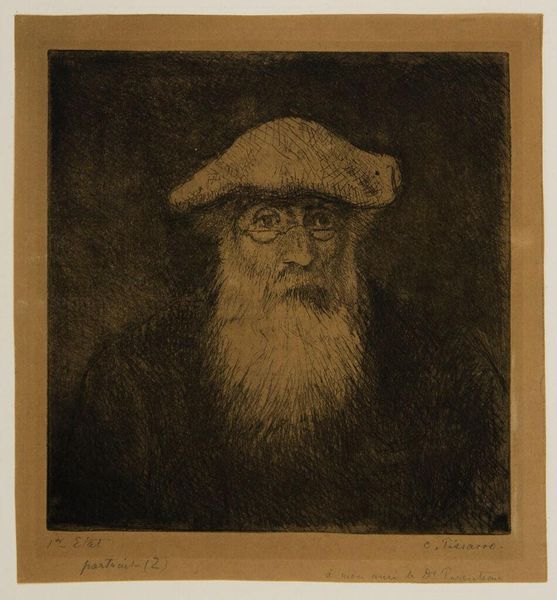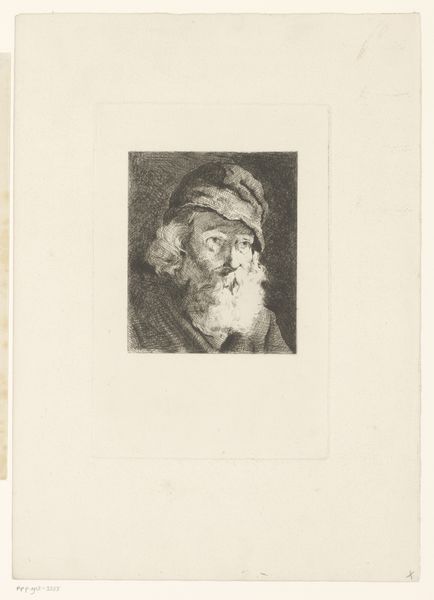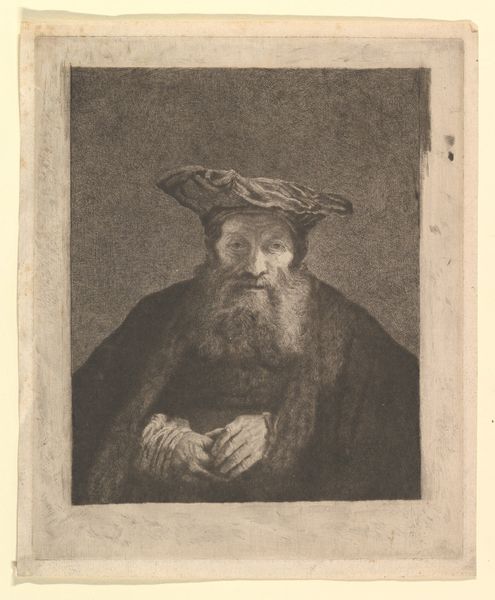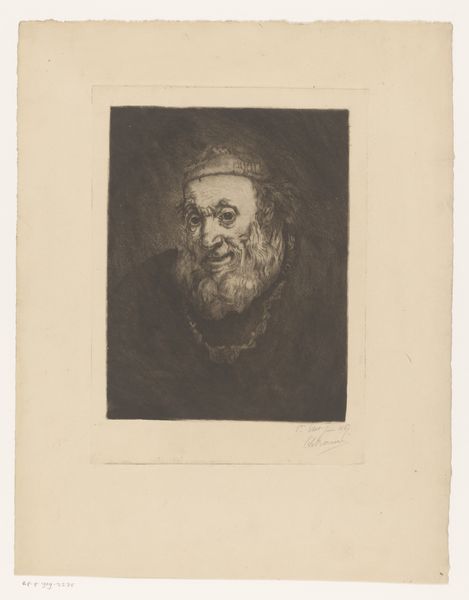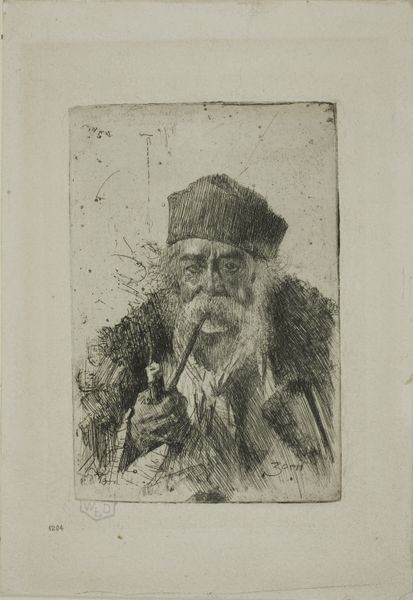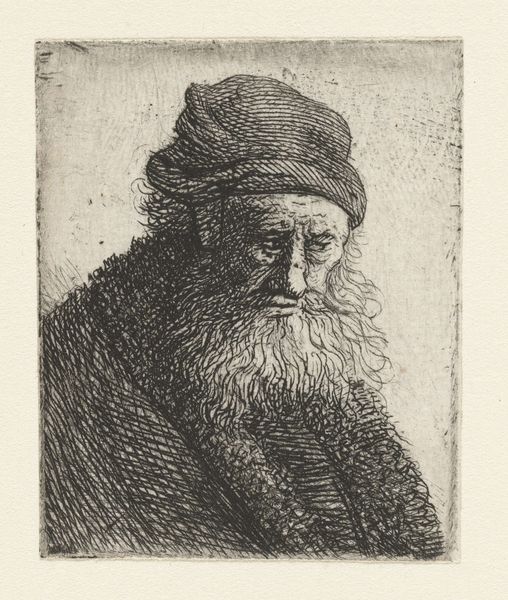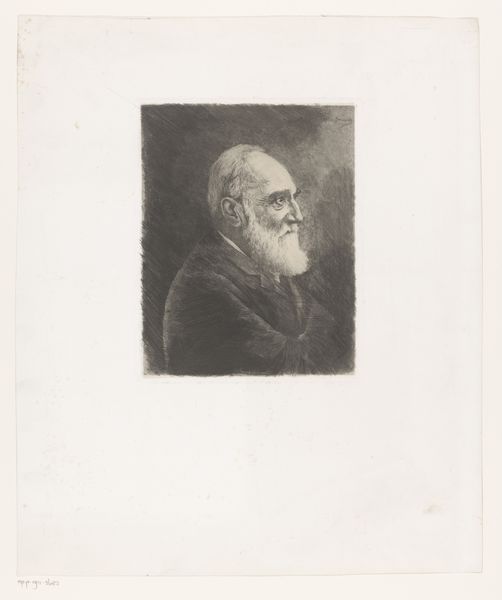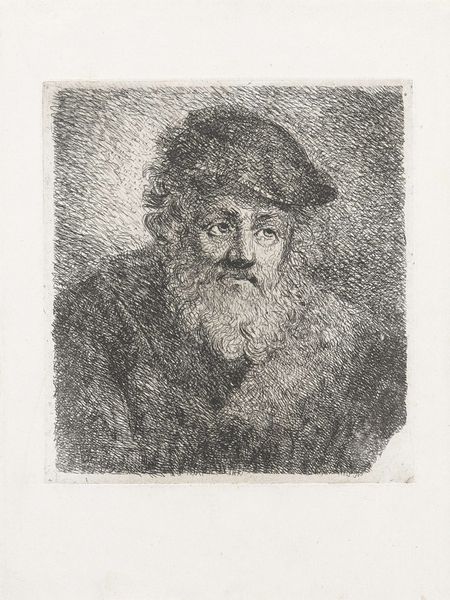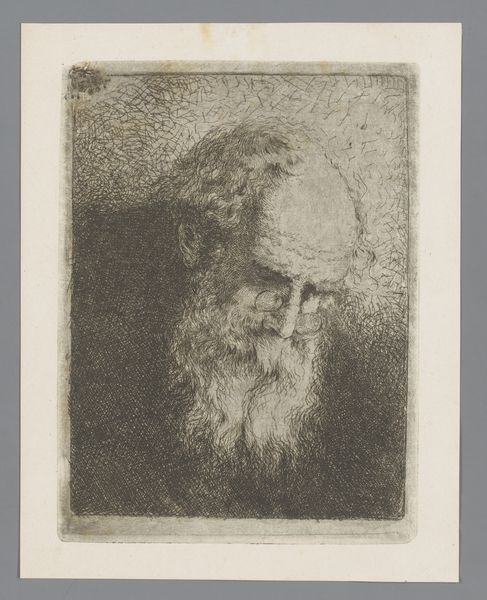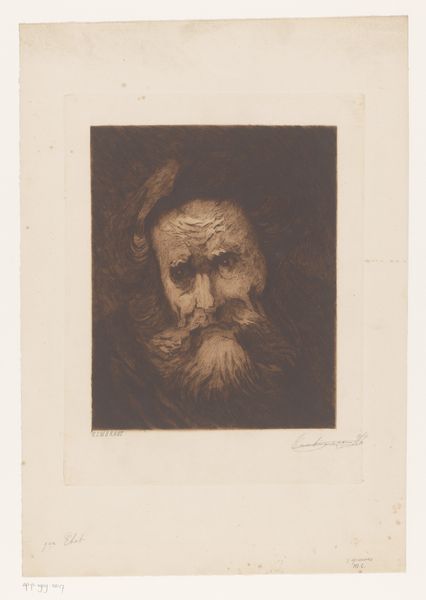
drawing, print, etching, paper
#
portrait
#
drawing
#
self-portrait
# print
#
impressionism
#
etching
#
paper
Dimensions: 186 × 177 mm (image/plate); 365 × 262 mm (sheet)
Copyright: Public Domain
Curator: Here we have Camille Pissarro’s self-portrait from around 1890, currently held in the collection of the Art Institute of Chicago. It’s an etching, printed on paper. What's your initial take? Editor: Striking, almost somber. The heavy use of dark lines creates a deeply textured surface, drawing me into the gravity of his expression. It looks like he is assessing us carefully. Curator: Absolutely. We can contextualize this within the late 19th-century art world, where artists began exploring their inner selves, challenging the academic focus on grand historical narratives. The very act of a self-portrait is inherently a statement of identity, pushing against established hierarchies. Pissarro, particularly as a Jewish man in France, navigates a complex landscape. Editor: That context really adds layers to the materiality. An etching demands meticulous labor. Think about the process, the acid biting into the metal, each line a conscious act of production. There’s no quick sketch here; this is deliberate, considered craftsmanship. Curator: And that craft reinforces his presence! Pissarro wasn't just rendering a likeness; he was constructing a persona. He presents himself with a direct gaze and what looks like traditional headwear. How do we interpret his aesthetic choices as an older man, positioning himself within contemporary social discourse? Editor: It speaks to control, even defiance, given the Impressionist rejection of the Salon system. He's literally making his own mark, from conception to physical print, bypassing traditional routes of artistic validation. Consider the scale too - it suggests intimacy, like holding a personal thought in your hands. Curator: I think your insights on materiality provide such nuance to the socio-political readings here. What is particularly potent is how Pissarro grapples with portraying both the individual and the artistic figure simultaneously through a conscious labor. Editor: The tension is compelling. By controlling the means of production and the artistic outcome, Pissarro seems to command how his story is crafted. A potent act for someone always dedicated to portraying social realities around him, isn't it? Curator: Indeed. Thinking about Pissarro's artistic choices here enriches our grasp of how Impressionism functioned within the context of his life and contemporary discussions of selfhood. Editor: I agree completely. Reflecting on Pissarro’s method really shifts our understanding beyond simple aesthetics toward deeper artistic declarations.
Comments
No comments
Be the first to comment and join the conversation on the ultimate creative platform.
